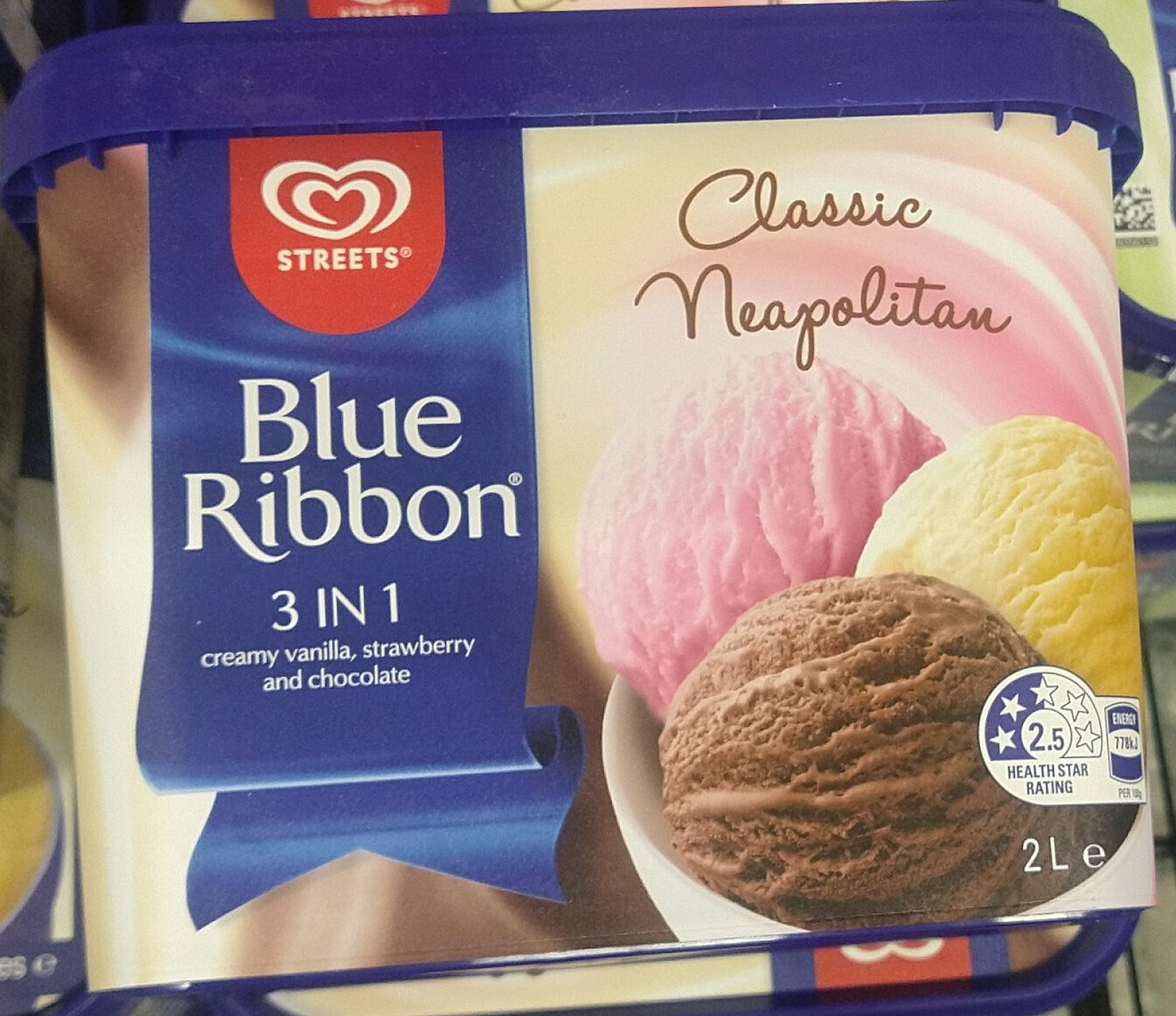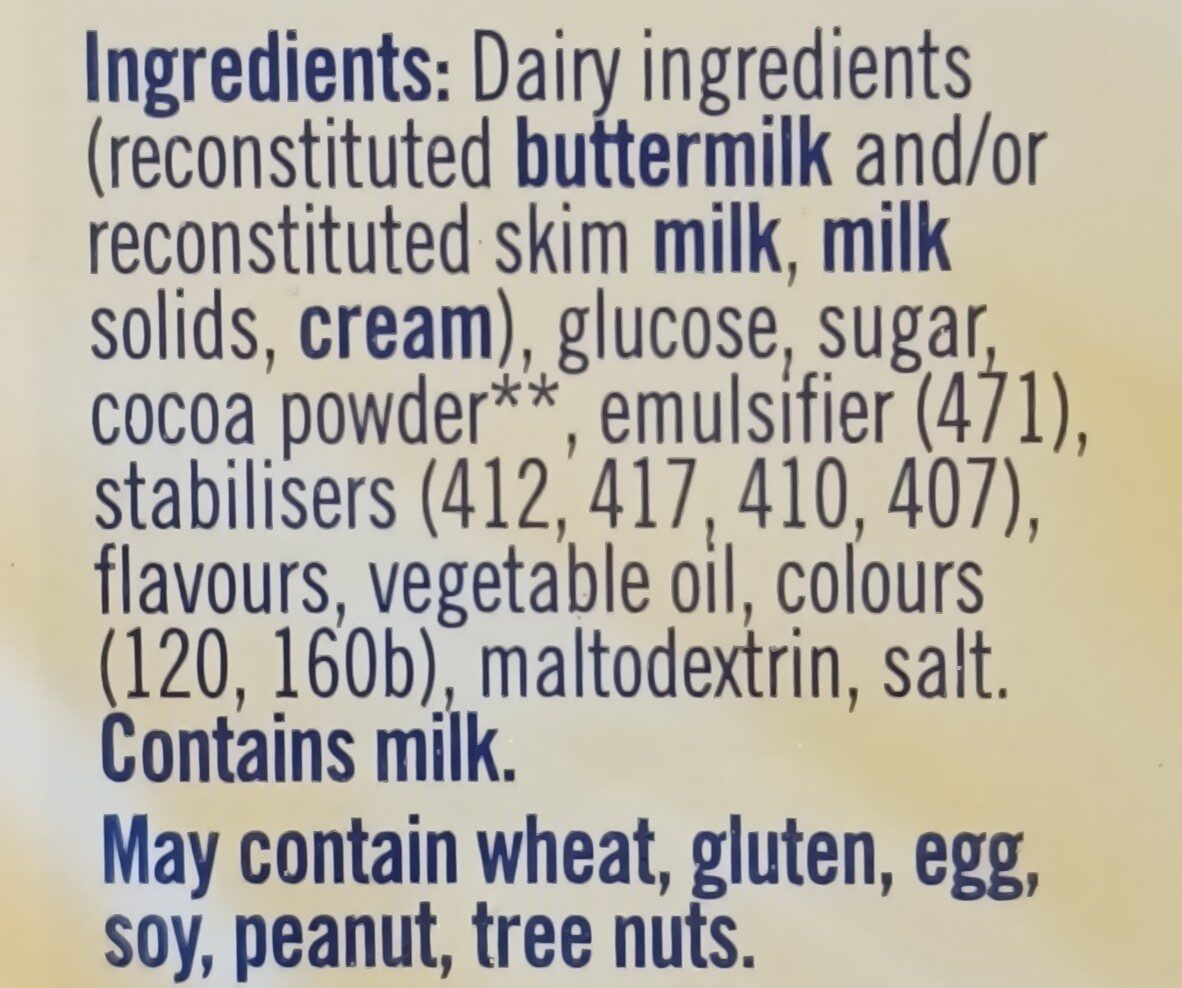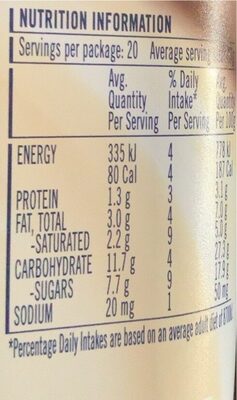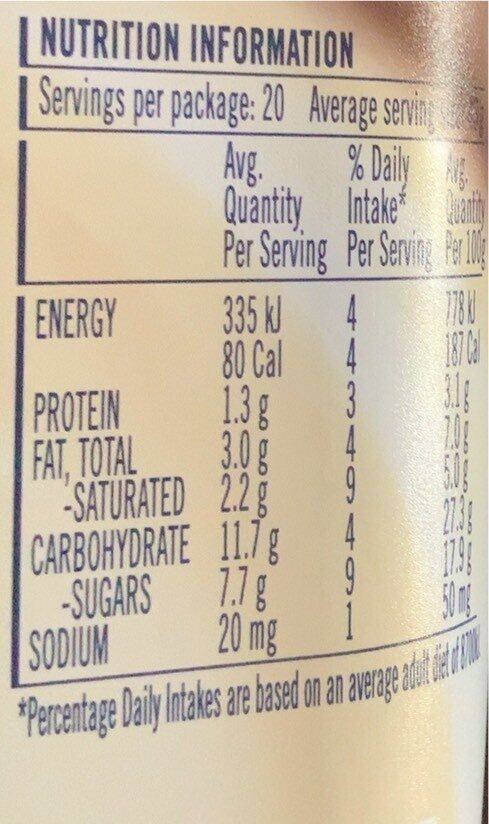Blue Ribbon 3 in 1 ice cream - Unilever
This product page is not complete. You can help to complete it by editing it and adding more data from the photos we have, or by taking more photos using the app for Android or iPhone/iPad. Thank you!
×
Barcode: 9300830045556 (EAN / EAN-13)
Packaging: Frozen
Brands: Unilever, Blue Ribbon
Categories: Desserts, Frozen foods, Frozen desserts, Ice creams and sorbets, Ice creams, Ice cream tubs
Labels, certifications, awards:
Australian made, Health Star Rating, Health Star Rating 2.5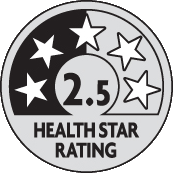
Stores: Woolworths
Countries where sold: Australia
Matching with your preferences
Environment
Carbon footprint
Packaging
Transportation
Report a problem
Data sources
Product added on by openfoodfacts-contributors
Last edit of product page on by charlesnepote.
Product page also edited by archanox, clockwerx, inf, kiliweb, packbot, roboto-app, yuka.sY2b0xO6T85zoF3NwEKvlmJId_7RvWPEOBDtmk2TxNuzCMXMTtpdy4_8GKs.

